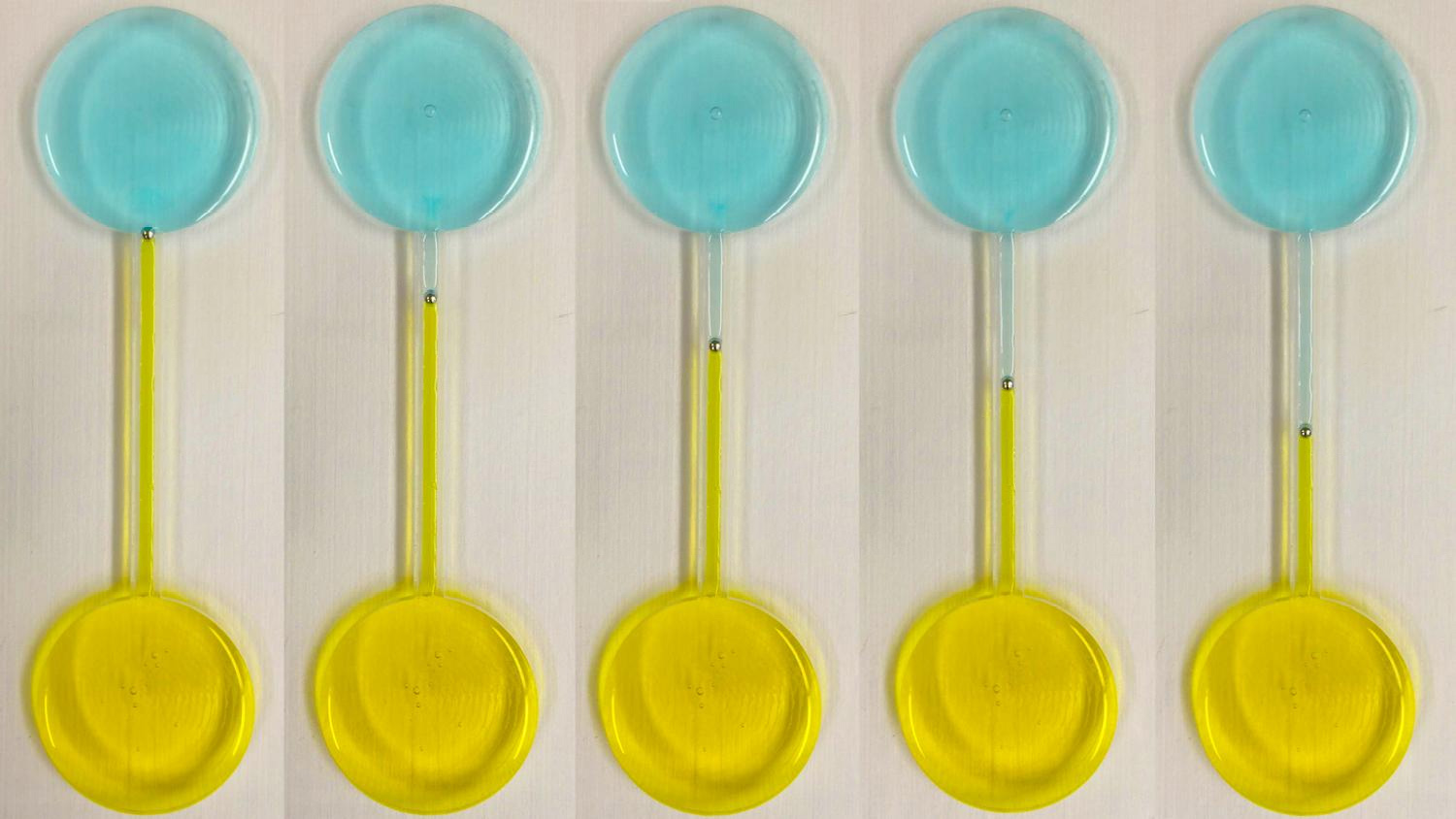Self-propelling liquid metal takes us a step closer to the Terminator

The technology that we use on an everyday basis is what's known as "solid-state". In the guts of smartphones, laptops and cameras, the circuit boards are static, with fixed metal tracks and semiconductors.
But engineers at the Royal Melbourne Institute of Technology are working on a new type of circuitry, one which is flexible and can be reconfigured dynamically to suit whatever task is taking place.
They believe that liquid metals - mostly non-toxic alloys of gallium - are the best way to achieve this goal.
They have a highly-conductive core, along with a semiconducting oxide skin that's only a few atoms thick. They're malleable, and contain everything you need to make a circuit.
Like live cells
But these liquid systems actually act more like live cells than traditional circuits. Their component parts move around and communicate with each other, rather than being stuck in one configuration.
The first step is figuring out how to make the metals move autonomously, and that's what the team - led by Kourosh Kalantar-zadeh - have been working on.
After immersing the liquid metal droplets in water, they found out that changing the chemistry of the water could get the metal to move and change shape.
Sign up for breaking news, reviews, opinion, top tech deals, and more.
Better programming
"Using this discovery, we were able to create moving objects, switches and pumps that could operate autonomously - self-propelling liquid metals driven by the composition of the surrounding fluid," Kalantar-zadeh said.
"Eventually, using the fundamentals of this discovery, it may be possible to build a 3D liquid metal humanoid on demand. Like the T-1000 Terminator but with better programming."
The research was published on 4 August in the journal Nature Communications. It's probably a good idea to go and read it, just in case.
- Duncan Geere is TechRadar's science writer. Every day he finds the most interesting science news and explains why you should care. You can read more of his stories here, and you can find him on Twitter under the handle @duncangeere.
